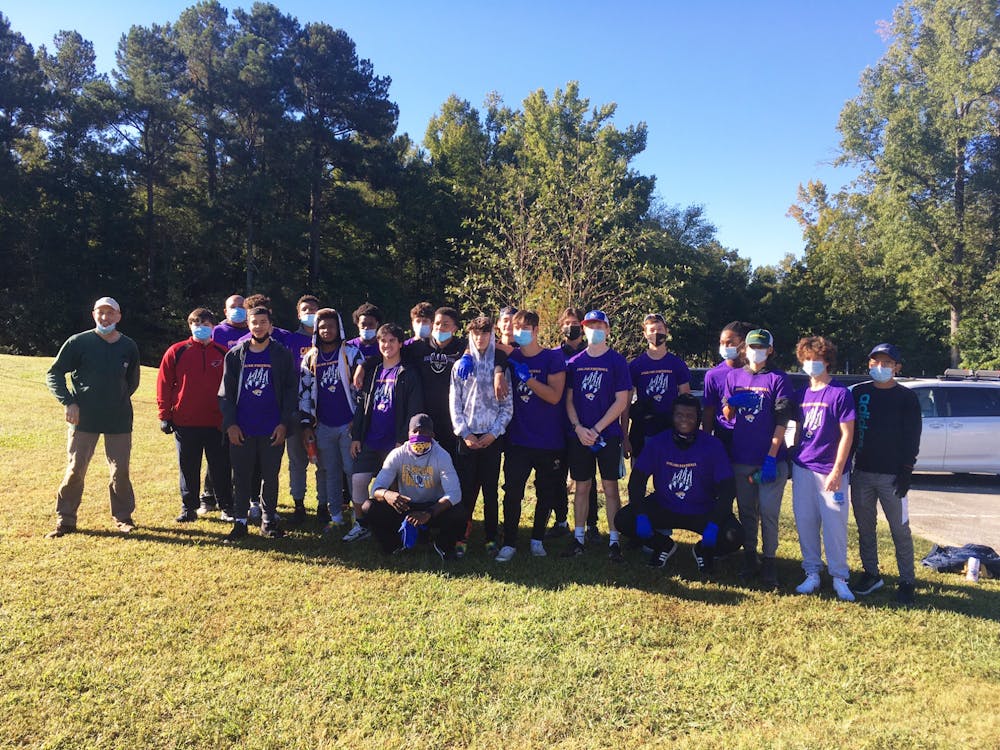He adopted the Morgan Creek Greenway in Chapel Hill which includes Merritt’s Pasture. He works here and at Brumley Nature Preserve to remove invasive species roughly four or five times a week. He regularly removes various species like privet, wisteria, English ivy and thorny olive.
“We focus on basically removing the plants so that the natives can survive and grow, and the next generation of trees and so on can get started,” Feuerstein said.
Barbara Stenross, a 33-year Carrboro resident, also volunteers to remove invasive species. She said her projects with the Town have included removals at Wilson Park and Anderson Community Park.
She's also worked on removals in her neighbors' yards, targeting species like Chinese privet and ground ivy.
Her interest in environmental issues and local ecology drives her to continue doing this work.
“One thing that we have to do is maintain our tree canopy and expand it and make sure we have next generations of trees coming along,” she said.
The Carrboro High School football team also partnered with the Town to help remove invasive privet at Henry Anderson III Community Park last fall using saws and other tools.
Head coach Ken Lathan said it is important for his players to learn about this issue, all while taking action as a team.
“I thought the guys really took that opportunity to not only work with each other in that capacity, but also learn,” he said.
Feuerstein is organizing a cleanup with Chapelboro Tree Rescuers in the Brumley Nature Preserve on Sunday. Those interested in attending can RSVP here.
“It’s actually rather fun work to get out there and remove things because you get to really experience and know the place,” Stenross said.
Invasive species in North Carolina
To get the day's news and headlines in your inbox each morning, sign up for our email newsletters.
Tree-based invasive species are common in North Carolina. For example, Knorek said, firewood can carry emerald ash borers, a type of beetle that kills ash trees.
“(Invasive species) have a bunch of characteristics that make them generally adaptable in a lot of different conditions,” she said.
Knorek encouraged people to buy firewood locally in order to decrease the amount of wood being transported across the state.
However, Mollie Yacano, a doctoral student who works in the Piehler Lab at UNC, said not all invasive species are harmful, and some can work well alongside their native environment.
“If you’re spending so much money and putting it into trying to eliminate invasive species, there’s probably better ways you can spend that money on management,” she said.
Her research focuses on how some invasive species can help the environment. For example, she studies species in coastal systems, like Phragmites — a common reed grass — that can help absorb excess nitrogen.
Nevertheless, she encourages people to generally consider choosing native species when landscaping.
“That’s something you can do, at least in your own yard, that is going to make a difference,” she said.
@WaverlyMcIver
@DTHCityState | city@dailytarheel.com
CORRECTION: An earlier version of this story incorrectly stated that the Morgan Creek Greenway included the Brumley Nature Preserve. It, however, only includes Merritt’s Pasture. The Daily Tar Heel apologizes for this error.




